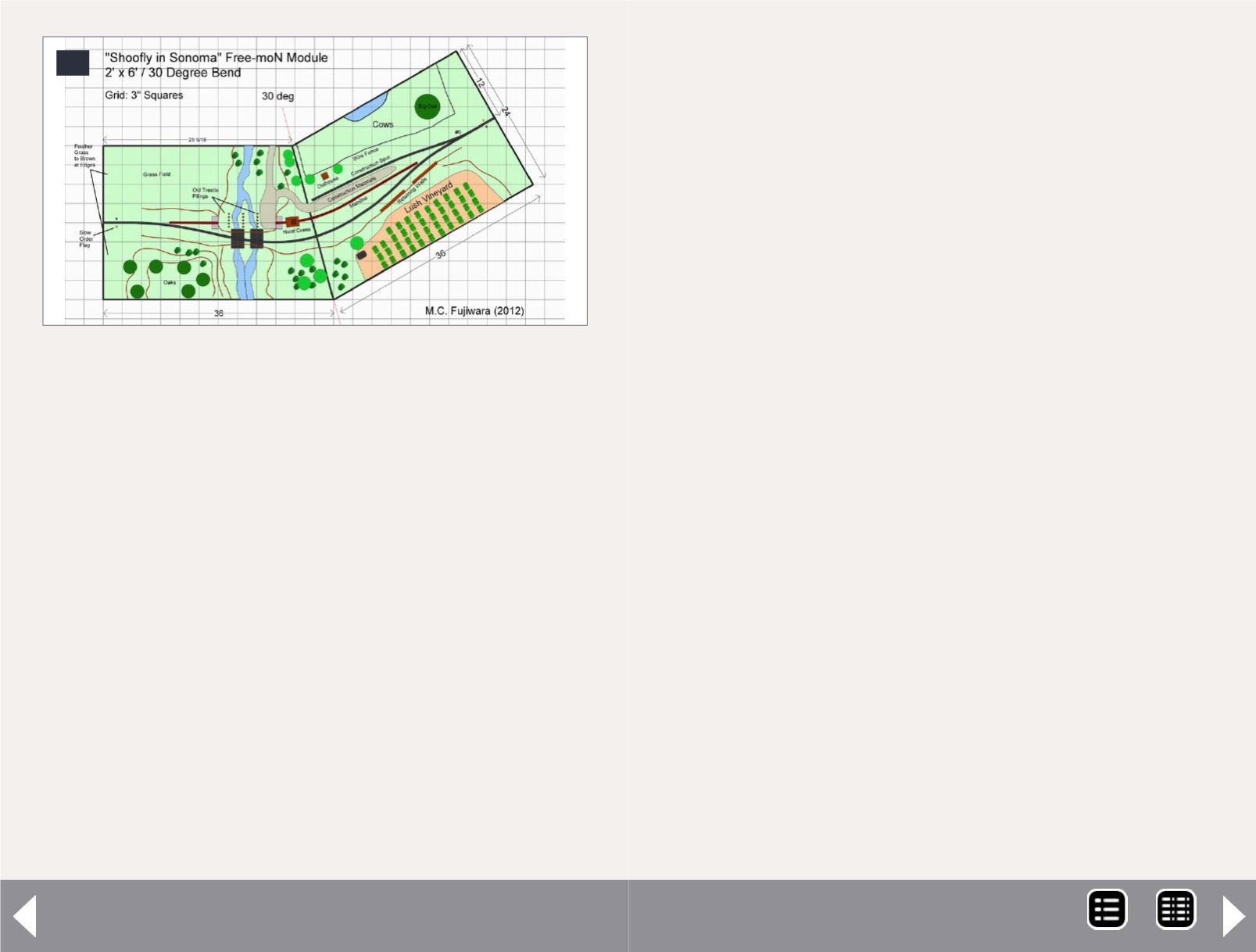
Shoofly free-moN module - 4
2b
Layout Planning
The “Free” of Free-moN can be deceptively intoxicating:
between the standard end plates I can do whatever I want! Full
yards! Turntables! Turnback loops and winding grades up into
dramatic mountain passes! And, while you can realize all those
free-ranging dreams with some careful planning, the Number
One Free-moN module design consideration actually has noth-
ing to do with minimum radii, turnout frog number, or length
of train, but with … your car.
Measure the interior for the space you have to transport the
module. The most high-detailed, creative module is useless
unless you can transport it to the show or meet to join up with
the other modules!
That’s why the #1 “unofficial” rule of Free-moN is “If you can’t fit
your module into your car or truck, then IT DOES NOT EXIST!!!”
So I cleaned my Toyota Rav4, folded up the back seats, mea-
sured the space available, and determined I could build a mod-
ule in multiples of 2’x3’ sections. (If I had realized then that I
could unbolt and remove the back seats, I might have ended
up with a much longer module.)
In a modular layout like Free-moN, a slight curve gives more oper-
ational options and more stability to the layout as a whole, so I
decided to build two 2’x3’ sections set at a 30 degree angle (2).
Given the rather sharp curves for the mainline to go around
the shoofly, an angled module actually helped ease both the
S-curve and the overall radii. Free-moN standard mainline
radius minimum is a generous 22” so the long modern freights
and passenger trains look good.
In addition to the bridge-building scene at the center, I
wanted to include some signature Sonoma scenes such as a
vineyard, a cow pasture, and some rolling hills riddled with
yellow mustard flowers and oaks. I had never made grape-
vines, oaks or pastures, but I firmly believe that each new
model railroading project should challenge your modeling
skills in some way. Learn by doing!
I set the module width at 24” wide, mainly because, first,
that’s the “recommended practice” called for by the standards
and, second, that’s what Steve Williams had on his module.
However, after building and operating many more modules, the
voice of experience has taught all of us that 16” to 18”-wide
modules are optimum for operational potential, scenic expres-
sion and transportational ease.
“In a modular layout like Free-moN, a slight
curve gives more operational options and
more stability to the layout as a whole... ”
MRH-Nov 2013


